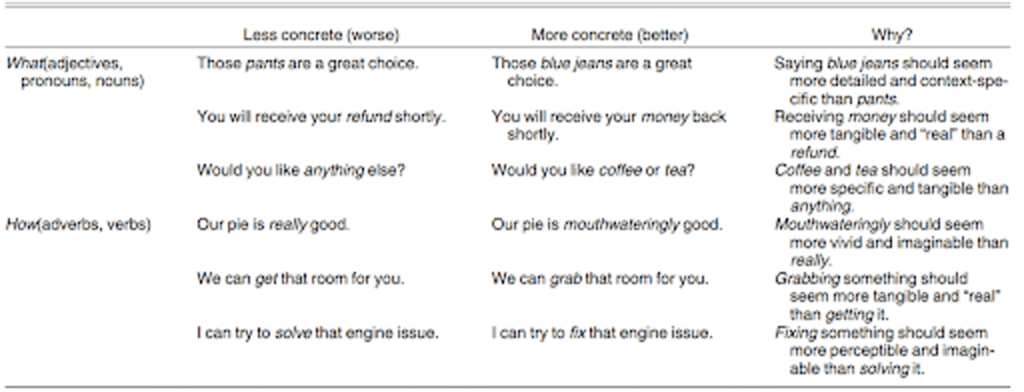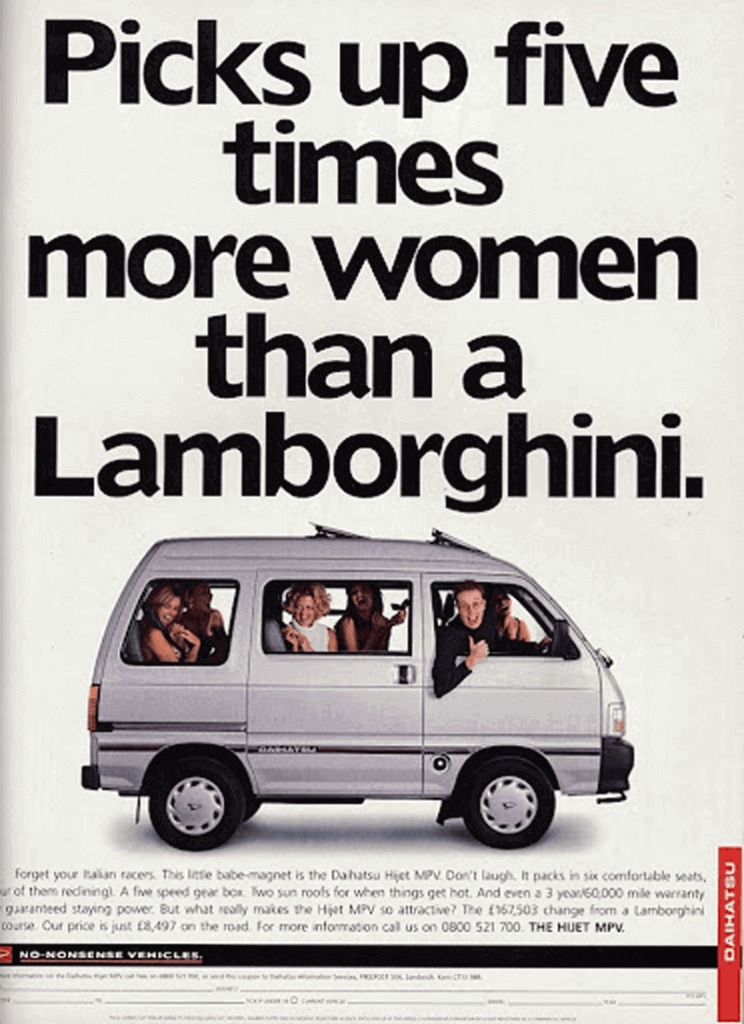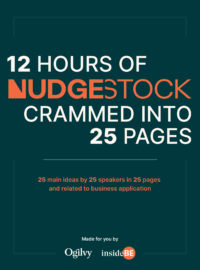How to Make Your Copy Memorable: Have a Concrete Message

We often use complicated and abstract language to make our product seem grandiose, impressive, and memorable to customers when making their purchasing decision. However, although your intentions might seem good, these attempts could be having the opposite effect.
In this article, you’ll discover:
- How to get people to remember your marketing content;
- Why you should be using concrete instead of abstract language in your messaging;
- Examples of memorable marketing campaigns that used concrete language; and
- 5 actionable steps on how to make your writing more concrete.
“This composition has been compiled to proffer intelligent solutions for the reader to empower themself with the ability of generating influential marketing that is undying in the minds of their consumers.”
Did you understand any of that? Probably not. Will you remember it? Definitely not.
How about this version?
This article is a guide to teach you how to make your messages and campaigns more memorable for your customers.
Ahh. Much better.

Discover ground-breaking ideas and fascinating solutions.
As marketers, we know language matters, so we have a natural tendency to sway towards the use of abstract and elaborate language. Can you blame us? We’ve been conditioned to believe that it will impress our readers and make them remember our message.
InsideBE expert, author, and CEO of Astroten Richard Shotton agrees, arguing that;
“If [your message] is memorable, you’ve got a better chance of success when someone is at the point of decision.”
If [your message] is memorable, you’ve got a better chance of success when someone is at the point of decision.
However, studies have shown that more complicated and abstract messages are harder to remember.
We interviewed Richard to better understand how to make marketing messages more memorable.
If you want to be remembered, make your message concrete.
Richard began by pointing to a 1972 study by Ian Begg, a psychologist specializing in memory, which best describes the impact of using concrete language. In his study, Begg compared how well subjects could remember meaningful two-word phrases, with some being concrete (e.g. ‘round temple’ or ‘square door’) and others being abstract (e.g. ‘absolute truth’ or ‘basic theory’).
Begg’s results clearly showed that concrete phrases were more likely to be remembered, with 4 times as many subjects able to recall the concrete phrases over the abstract ones.
Concrete phrases were more likely to be remembered, with 4 times as many subjects able to recall the concrete phrases over the abstract ones.
Why is this the case? Well, he argues that it’s because we tend to visualize concrete phrases as an image (you can’t deny it’s much easier to ‘see’ a square door than an absolute truth) and engage our powerful visual memory, which has been shown to be more effective than verbal memory.
Concreteness sells more
Furthermore, a more recent study by Packard and Berger (two business psychologists from the Schulich School of Business, York University, and The Wharton School, University of Pennsylvania respectively) found that concreteness increases people’s willingness to buy and how much they actually spend.
Their results showed that increasingly concrete language increased purchase intentions by up to 12% and actual purchases by 13-30%.
Even more impressive, their results held across different modes of communication (i.e. email vs. phone) and contexts (different firms, customer requests, and languages).
What counts as concrete language anyway?
So now that we understand the power of concrete language – how do we differentiate it from abstract language?
Abstract language involves intangible concepts that are often vague and hard to visualize.
Some commonly used examples in marketing include:
- Streamlining
- Results
- Improve
- Solution
- Needs
- Optimize
- Drive forward
Concrete language, on the other hand, is very clear and specific. It gets right to the point and provides important details.
For example:
- Converting leads into customers
- A lemon tart with a tangy citrus filling and crunchy meringue top
- A wagon with a two litre turbo diesel engine and four-wheel drive
One company that uses concrete language very effectively is Netflix, who use simple, explicit language to persuade and make customers feel at ease.
How do I make my writing more concrete?
Here are Richard’s top tips to make your writing more memorable.
1. Define your key points
As with any piece of writing, the first thing you should do is identify your key points.
- What is your core message?
- What are you trying to say to the reader?
- What is the ultimate goal of this piece?
This will help you be more concise and prevent excess ‘fluff’ from clouding your writing.
2. Write your first draft (or look at an existing draft)
Now that you know what to say, say it!
When writing, Richard says to “set out very clearly that concreteness is what you want. Most good writers already know that this is what you want to achieve.”
3. Answer any unanswered questions
Re-read the text you just wrote. Does it leave any questions to be asked?
For example, you may be promising “high-quality results” to your customers, but what does that really mean? Perhaps you mean “cleaner clothes than competitor X” or “ultra-white white washes” or perhaps “an incredible, long-lasting fragrance”.
You need to be quantifying your promises and avoiding any ambiguity in order to be more memorable. This is a great tactic, as it not only answers potential concerns and makes your point more persuasive, but it makes sure that you’re avoiding abstract language and are instead being more specific.
If you come across any abstract words in your copy, ask yourself:
- “What kind?”
- “To what extent/how much?”
- “How exactly?”
- “What does this represent?”
and answer these questions in your writing.
4. Create a mental image
This is a crucial, and perhaps more difficult step.
Richard argues that;
“In practice, Begg’s point of visualization is a good rule of thumb – i.e. can you visualize the thing you’re saying?”
It’s important that your readers are able to imagine the contents of your message, as this is where memorability kicks in.
So ask yourself: Can I picture the contents of this message?
If not, this is a point where you should figure out how to describe the content of your message more specifically, and with more descriptive language.
This can be challenging, Richard warns;
“It’s not necessarily easy, there’s a creative leap needed”.
For example, instead of writing:
“Our product can help you meet your fitness goals.”
By adding more details, you can make the message more visual:
“Product X will help you make the numbers on the scale go down, through our interactive video workouts you can view straight from your phone!”
An example that Richard cites is the Apple iPod launch in 2001, with the memorable tagline of “1000 songs in your pocket”. A simple way to bring the 5GB storage capacity of the device to life by creating an imaginable scenario.

Source: Andrew Arruda on Twitter
Source: Andrew Arruda on Twitter
This campaign was in fact so memorable that Apple brought it back last year when advertising for the Apple Watch. This time it had an update: “60 million songs. On your wrist.”

Source: Andrew Arruda on Twitter
Still a bit uncertain? Packard and Berger provide some great examples of how to add concreteness to your language:

Source: Packard, G., and Berger, J. (2021). How Concrete Language Shapes Customer Satisfaction. Journal of Consumer Research, Volume 47, Issue 5, pp. 787–806.
5. Simplify the language
The final step is to simplify the language that you are writing with. Concrete messages are not just about using concrete words, but about being unambiguous.
It’s easy to underestimate the power of keeping things simple, but a 2006 study found that texts using simple, rather than overly complex language come across as 10% more intelligent.
Instead of overcomplicating and clouding your message with unnecessarily superfluous phraseology in an attempt to impress your audience, change your wording to be as simple as possible.
So instead of overcomplicating and clouding your message with unnecessarily superfluous phraseology in an attempt to impress your audience, change your wording to be as simple as possible.
For example, turn wording like this:
“Our multifarious team contrives distinctive, individualized software solutions to allow human capital conveners to adequately compose an employee enchiridion.”
Into something more like this:
“We build custom software that helps HR department heads design employee manuals.”
A brand that can be praised for doing this in their communications is Revolut. In all of their marketing communications, via direct methods i.e. email, and indirect i.e. social media, they avoid the use of complicated terminology. They consistently use plain language to be understandable, which is especially valuable in the complicated world of fintech. Their choice to be uncomplicated extends to their product just as well – with even their terms and conditions being re-written to be a lot easier for the average person to read and comprehend.
It’s really that easy! An excellent example of a copy that’s used all of these principles is Daihatsu’s print advert for their Hijet MPV.

Source: DriveTribe – The Best Car Ads of All Time
They use simple, concrete language to get their point across: this car is spacious, has great specs, and is cheaper than a Lamborghini. They don’t leave any questions unanswered in the fine print – try to think of one! Finally, their tagline is very visual – even without the humorous photo, the caption “Picks up five times more women than a Lamborghini” brings an instant image to mind.
And that’s it! That’s all you need to know about making your messages concrete to make them memorable. The more concrete your writing is, the more likely you are to make your point, sound trustworthy, achieve conversions, and be remembered.
Key Takeaways
- Complicated and abstract messaging may seem more impressive and natural to fall into, but hiding behind abstract wording could be damaging your bottom line.
- If you want to be remembered, make your message concrete. This means using concrete terms (that are specific and tangible), answering any potential questions before they are asked, creating a mental image, and using simple terminology.
- Concreteness boosts memory, which also translates into customer willingness to pay and actual conversions.









